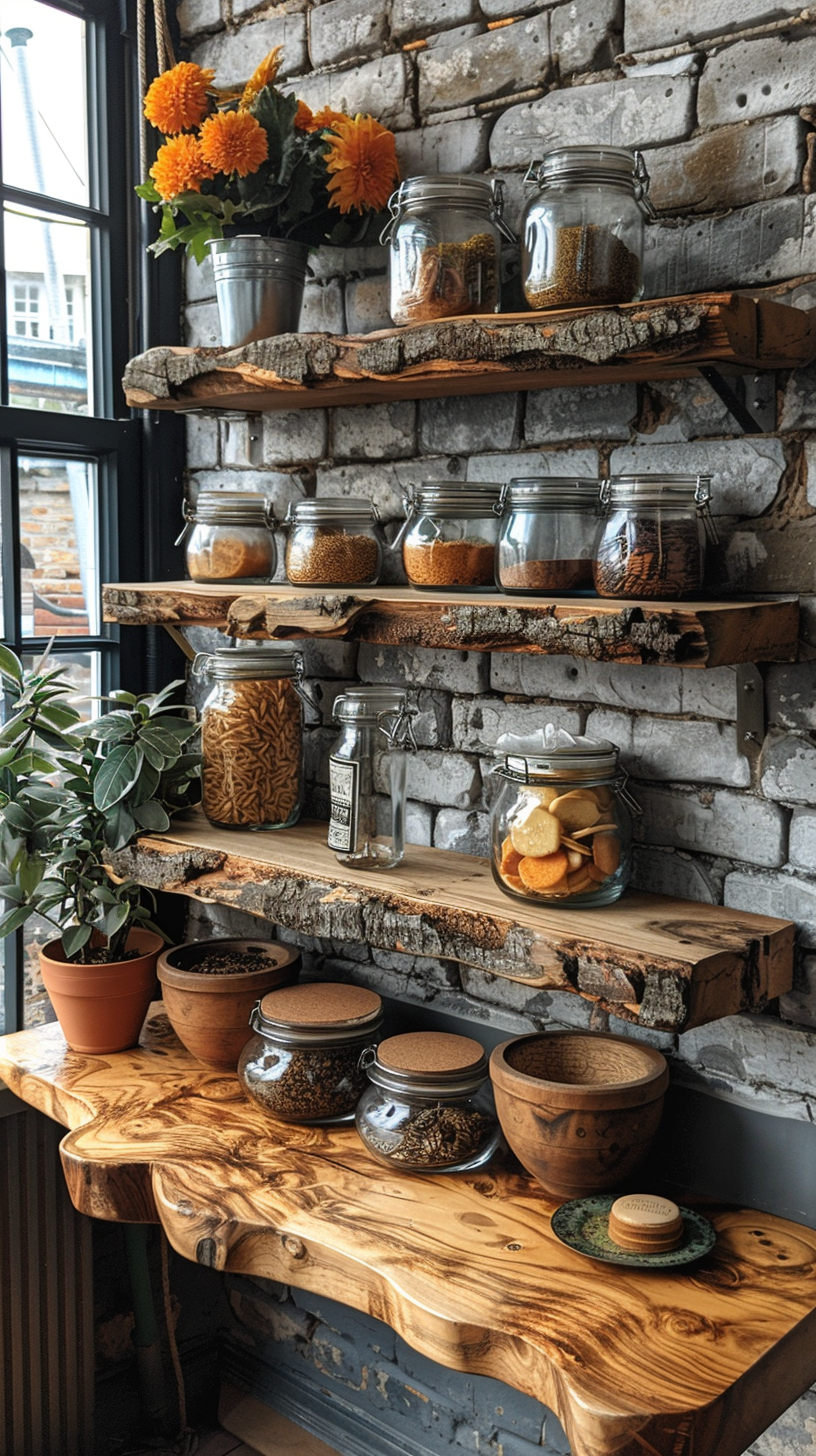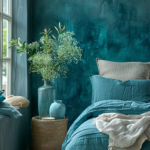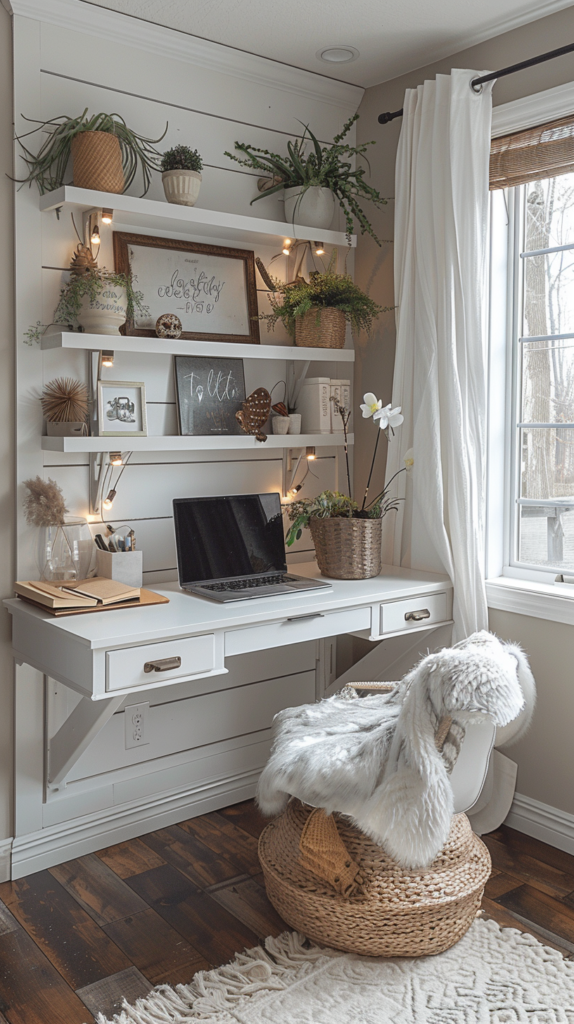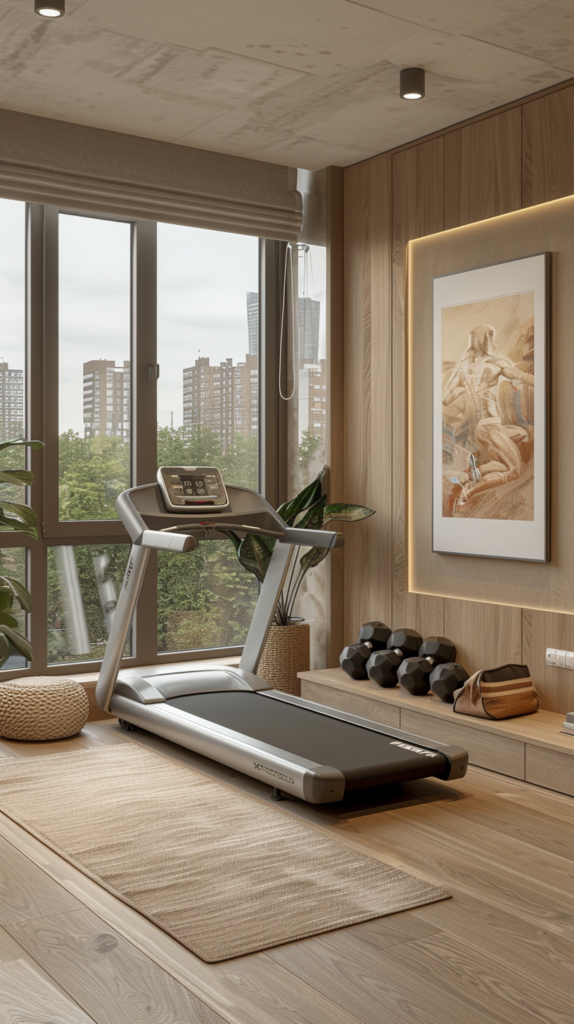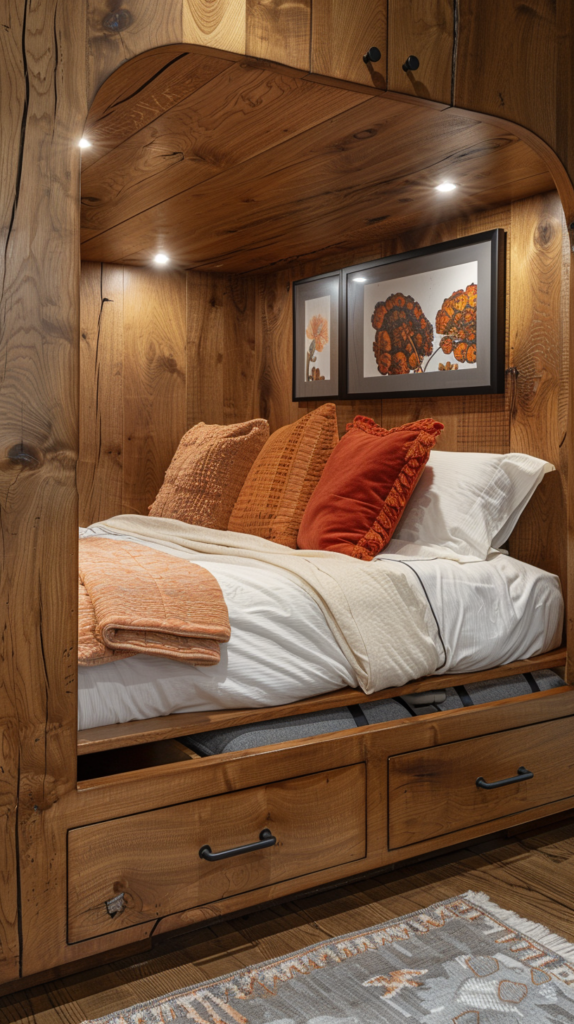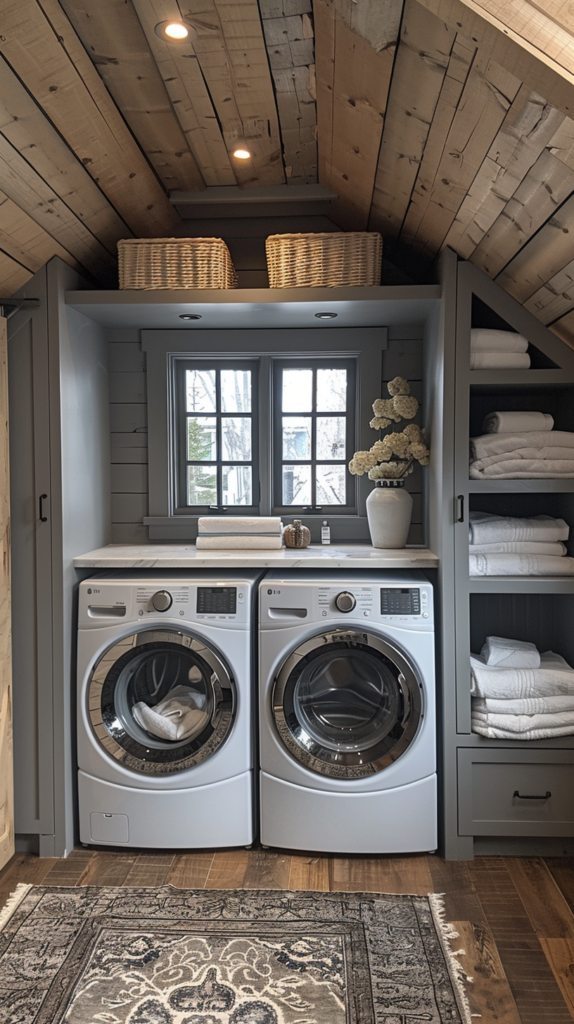Introduction
What Are Wall Shelves?
Wall shelves are storage solutions mounted directly on your walls. They come in various designs, from floating shelves to built-in units, and can hold everything from books to decorative items. The best part? You can customize them to fit your specific needs and style.
Why Focus on Vertical Storage?
Vertical storage is key in tiny homes where floor space is limited. By utilizing wall space, you can keep your floors clear and create a more open, airy feel. It’s all about making the most of what you’ve got, and wall shelves are a smart, stylish way to do just that.

Benefits of DIY Wall Shelves
Customization and Personalization
One of the biggest advantages of DIY wall shelves is that you can design them exactly how you want. Whether you prefer sleek modern lines or rustic wooden beams, DIY projects allow you to tailor everything to your taste and needs.
Cost-Effectiveness
DIY projects are often much cheaper than buying pre-made furniture. By choosing your materials and doing the work yourself, you can save a significant amount of money. Plus, you’ll gain a sense of accomplishment by completing the project yourself.
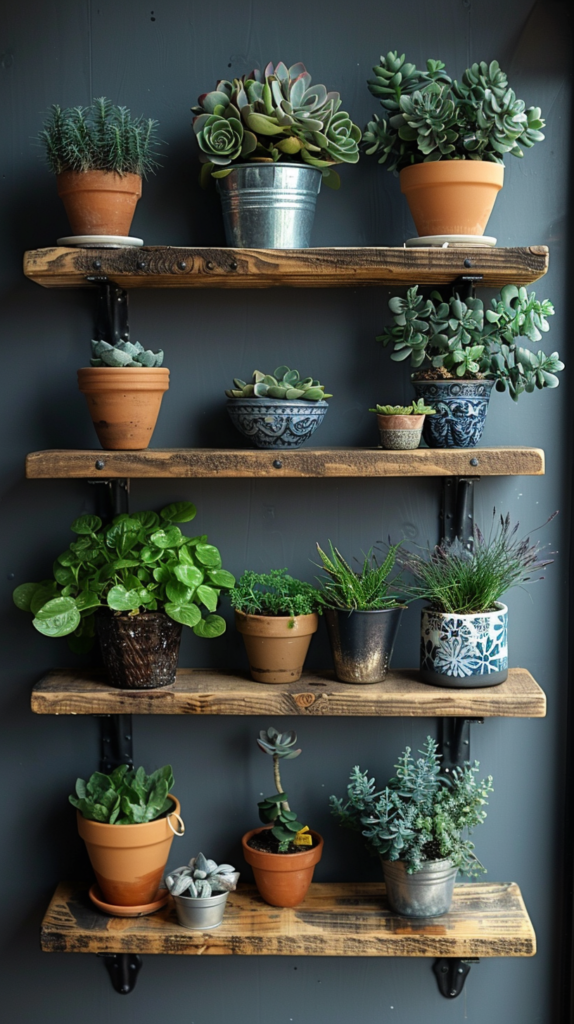
Space Optimization
Custom wall shelves can make a huge difference in tiny homes. You can create storage that fits perfectly into awkward spaces, like above doorways or beside windows, ensuring that no area goes unused.
Planning Your DIY Wall Shelves
Assessing Your Space
Before you start, take a close look at your walls. Measure the available space and consider how you use it. Do you need more storage for books, plants, or kitchen essentials? Understanding your needs will help you design shelves that work best for your lifestyle.
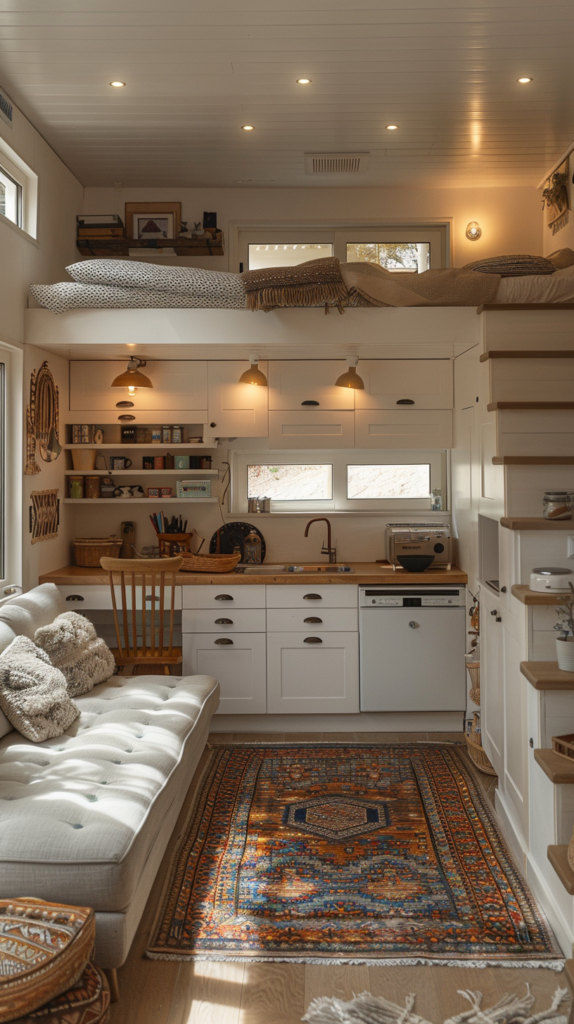
Choosing the Right Materials
The materials you choose will impact both the look and durability of your shelves.
Wood vs. Metal vs. Floating Shelves
- Wood: Classic and versatile, wood shelves can be stained or painted to match your décor. They’re sturdy but may require more maintenance.
- Metal: For a sleek, modern look, metal shelves are great. They’re often more durable but can be more expensive.
- Floating Shelves: These are shelves with hidden brackets, creating a minimalist look. They’re ideal for a clean, uncluttered aesthetic.
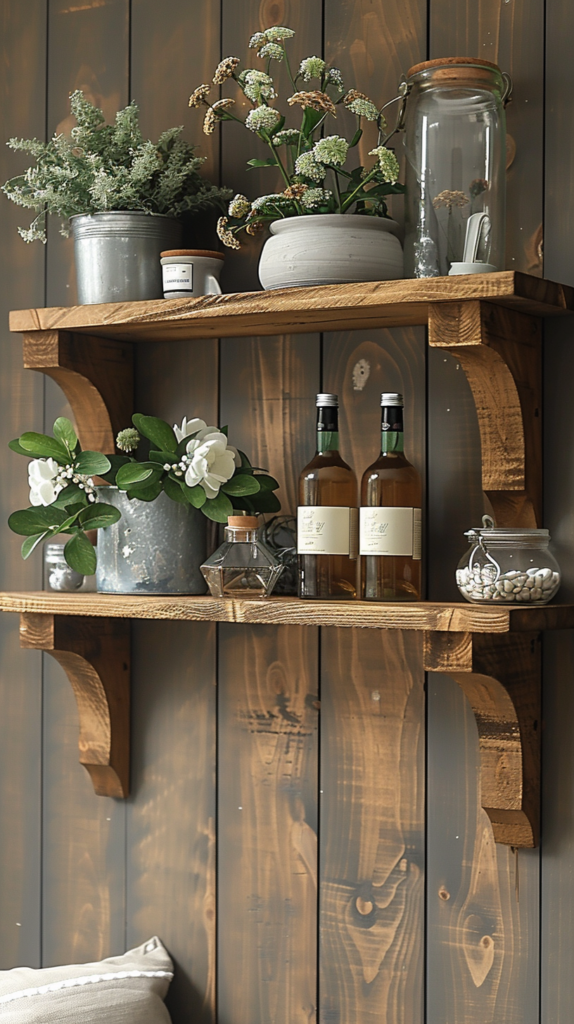
Tools and Hardware Needed
Ensure you have the right tools before starting your project. Basic tools include a drill, screws, wall anchors, and a level. If you’re new to DIY projects, you might also want to invest in a stud finder to locate the best spots for anchoring your shelves.
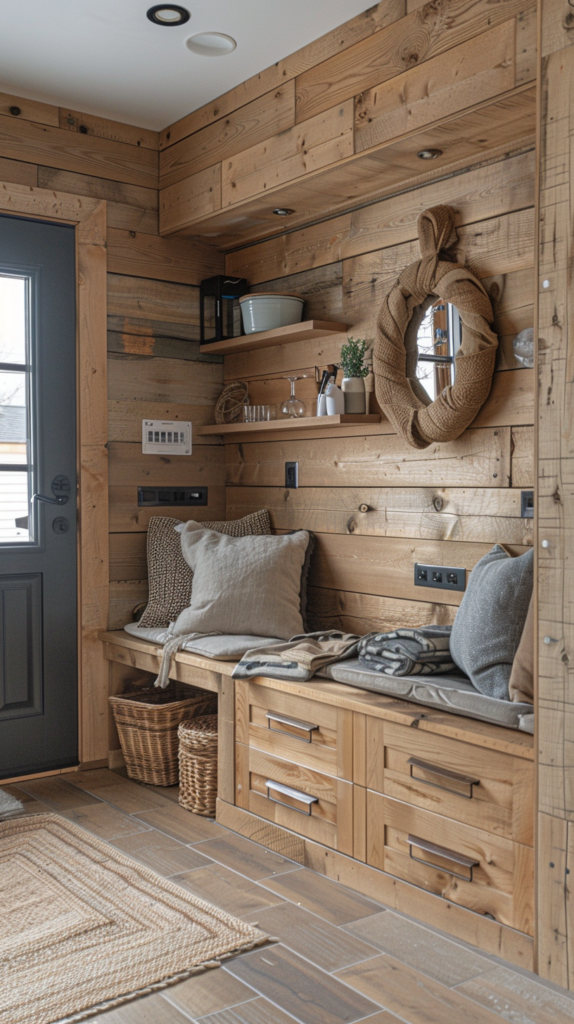
Design Ideas for Tiny Homes
Minimalist Floating Shelves
Floating shelves are perfect for a minimalist look. They don’t have visible supports, which makes them appear to “float” on the wall. They’re ideal for small spaces where you want to keep things simple and uncluttered.
Rustic Wooden Shelves
For a warmer, cozier feel, consider rustic wooden shelves. These can be made from reclaimed wood for a more eco-friendly option. They add character and charm, perfect for a tiny home with a cottage or farmhouse style.
Multi-Functional Wall Units
Multi-functional wall units can include a mix of shelves, hooks, and even small cabinets. This setup is great for maximizing storage and keeping things organized. Think about incorporating features like a small desk or charging station into your wall unit for added functionality.
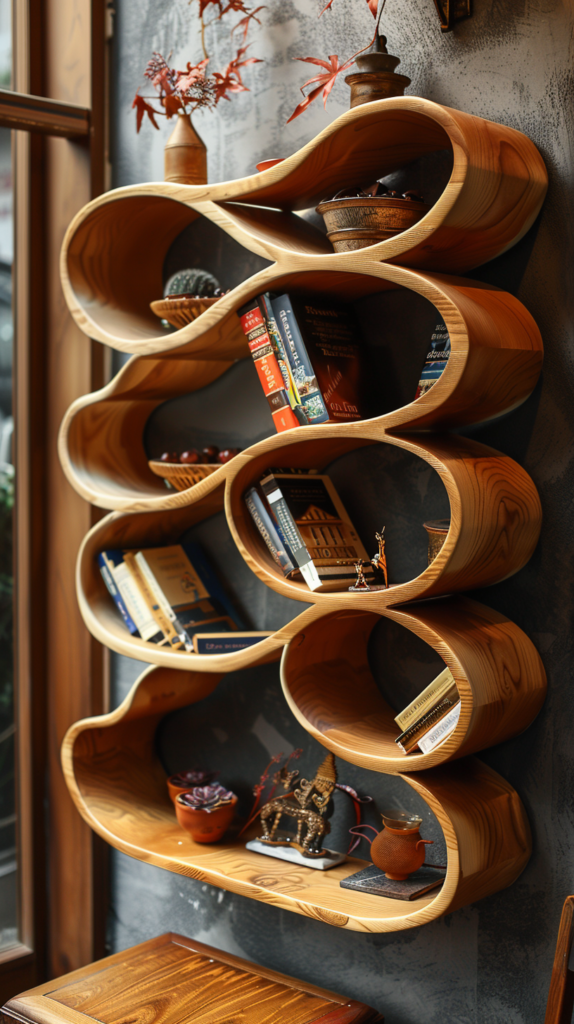
Step-by-Step DIY Wall Shelf Installation
Measuring and Marking
Start by measuring the space where you want to install your shelves. Mark the spots where you’ll place the brackets using a pencil. Ensure the marks are level to keep your shelves straight.
Installing Wall Anchors and Brackets
Using a Level for Precision
A level is essential for making sure your shelves are perfectly horizontal. Place the level on your marks and adjust until the bubble is centered.
Securing the Shelves
Attach the brackets to the wall anchors using screws. Make sure they’re firmly in place before adding the shelves. Once the brackets are secure, place the shelves on them and check for stability.
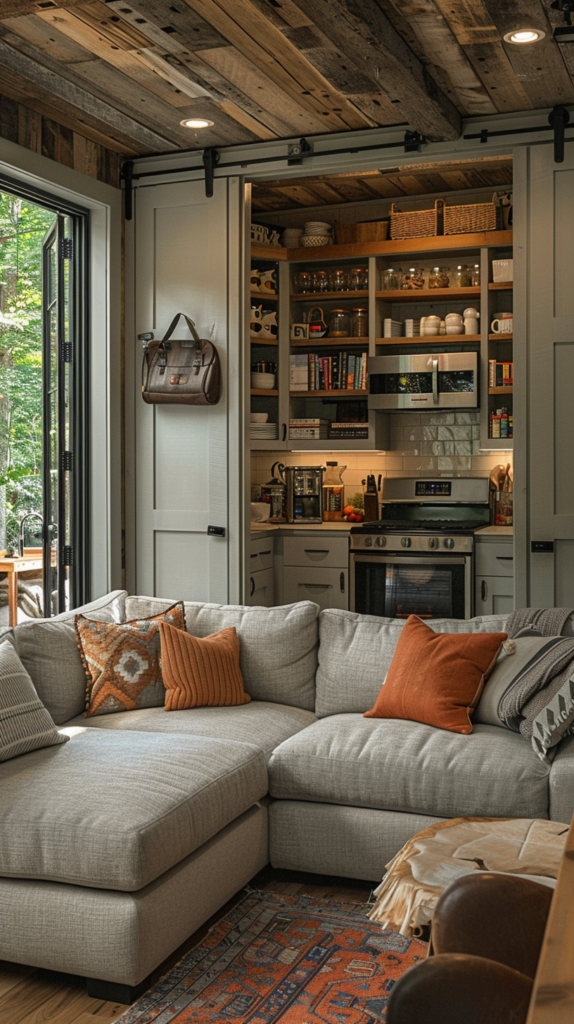
Decorating and Organizing Your Shelves
Stylish Storage Solutions
Decorate your shelves with items that reflect your style. Use baskets or boxes for smaller items to keep everything looking neat. Add personal touches like framed photos or decorative objects to make the shelves feel like part of your home.
Incorporating Plants and Accessories
Plants can liven up any space. Consider adding small potted plants to your shelves for a touch of greenery. Accessories like vases or sculptures can also enhance the visual appeal.

Maintenance and Upkeep
Cleaning Tips
Keep your shelves dust-free by wiping them down regularly. Use a soft cloth or duster to remove dust and debris. For wooden shelves, a wood cleaner can help maintain their finish.
Repairing Common Issues
If your shelves start to wobble or show signs of wear, check the brackets and anchors. Tighten any loose screws and replace any damaged parts as needed.
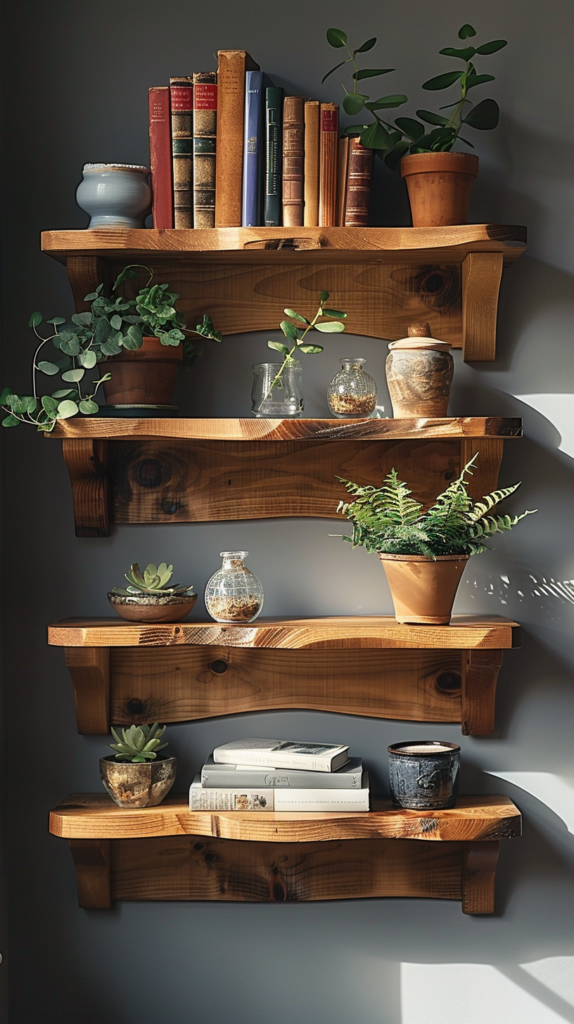
Conclusion
DIY wall shelves are a fantastic way to maximize vertical storage in tiny homes. By planning carefully and choosing the right materials, you can create functional and stylish shelves that enhance your living space. Whether you opt for floating shelves, rustic wood, or multi-functional units, the key is to tailor your project to fit your needs and style.
FAQs
How much weight can DIY wall shelves hold?
The weight capacity of DIY wall shelves depends on the materials used and how they’re installed. Ensure you use strong brackets and wall anchors for heavier items. Generally, well-installed shelves can hold between 20-50 pounds.
What are the best tools for DIY wall shelves?
Essential tools for DIY wall shelves include a drill, level, screwdriver, tape measure, and wall anchors. A stud finder can also be helpful for locating the best spots to install brackets.
Can I use DIY wall shelves in rental apartments?
Yes, DIY wall shelves can be used in rental apartments, but make sure to follow your lease agreements regarding modifications. Use removable wall anchors if necessary to avoid damaging the walls.
How do I choose the right design for my space?
Consider your needs and the overall style of your home. Floating shelves are great for a minimalist look, while rustic wooden shelves add warmth and character. Multi-functional units can help with both storage and organization.
Are there eco-friendly materials for wall shelves?
Yes, eco-friendly options include reclaimed wood and bamboo. These materials are sustainable and can be used to create stylish, environmentally-friendly shelves.

